What is peanut oil?
Peanut oil is a type of vegetable oil that is obtain from the peanut seed from the peanut plant. It is commonly known as groundnut oil or arachis oil and widely used around the world but extensively used in American, Asian and Southeast Asian Countries like India, china, cambodia, Vietnam and Laos etc. Peanut oil is mainly used in cooking and suitable for deep fat frying due to its high smoke point (232 °C or 450 degee F) as compare to the other cooking oil. Peanut oil also enhance the flavour of the food due to its strong nutty flavour and aroma. One of the unique properties of the peanut oil is that It does not absorb the flavor of other foods when cooked in the peanut oil. Food fried in peanut oil will have crispier outside and moist or juicy from inside. It contains a balanced fatty acid and antioxidant which support protection against free radicals as well as harmful substances. It is mild-tasting excellent food oil, with good flavour & high quality of peanut oil because of its low free fatty acid value.
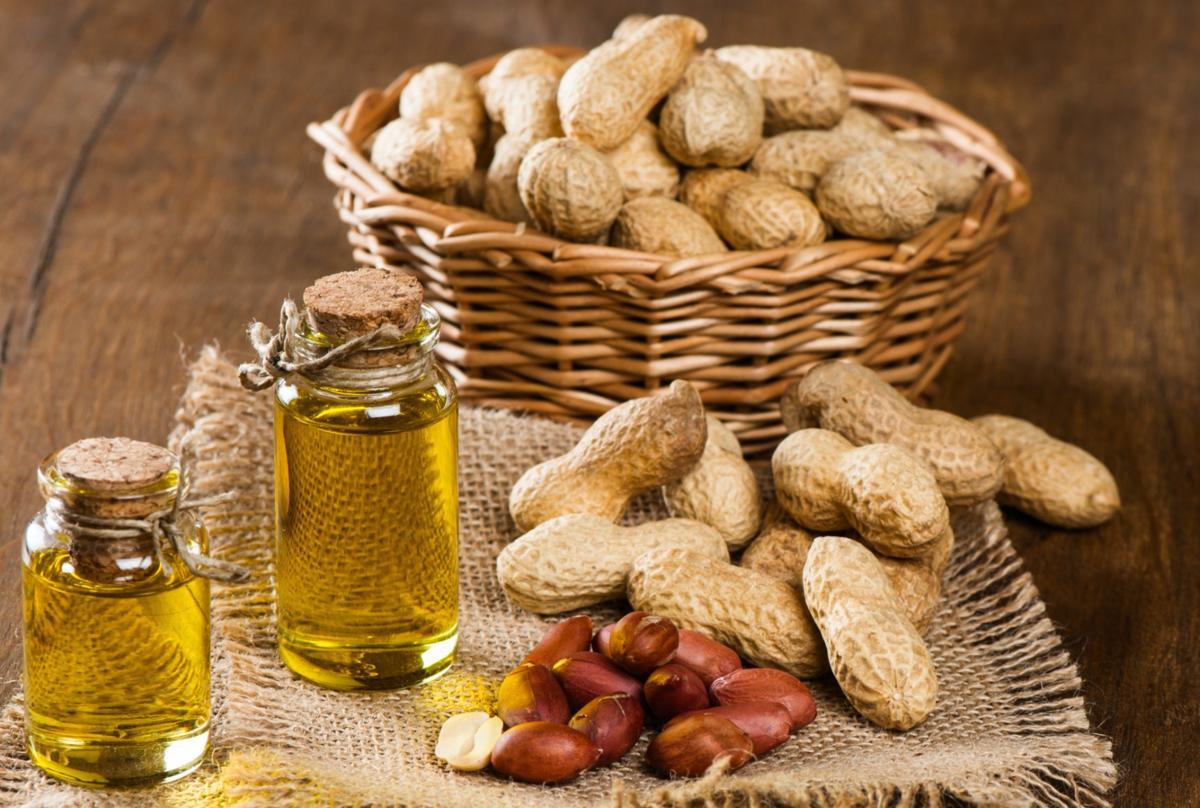
 Pic source-gonatural & kachighani.com
Pic source-gonatural & kachighani.com
Characteristic of peannut oil
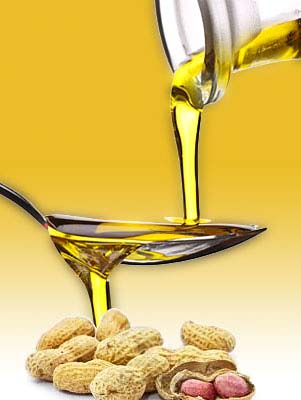
Pic source-Exports india
- Peanut oil is considered as a high quality of edible oil as it contains low free fatty acid (FFA) value in it. The adventage of having Low FFA value in peanut oil is that, it is stable and has longer storage shelflife without getting rancid as compare to other edible oil.
- Peanut oil is considered one of the most widely frying oil in the world due to its higher smoke point and stability of oil at higher temperature during frying food. Food which is fried in peanut oil will have an excellent sensory properties and food will be crisper from outside and jucier from inside.
- Peanut oil doesnot absorb any flavour of any food in which it is fried resulting several different food can be fried in peanut oil at the same time and the same batch of oil. Due to this reason peanut oil has become of the most value frying oil for large scale food operation or industry where multiple food products are fried in peanut oil before the oil is replaced.
- Peanut oil is mainly composed of triglycerides of eight fatty acids. The high content of oleic acid( Mono-unsaturated fatty acid:- 45-53%), optimum level of linoleic acid (Poly Unsaturated fatty acid- 27-32%) and very nominal amount of linolenic acid(Saturated fat- 14-18%) promote this oil for long frying life. Peanut oil as it is rich in Mono Unsaturated fatt acids helps to lowers the level of bad cholesterol in our body without lowering the levels of good cholesterol.
- Due to the 2nd double bound in Poly unsaturated fatty acid in peanut oil, a linoleic acid molecule can be more susceptible to oxidation resulting this Oxidative rancidity will limit the shelflife of the peanut oil and longer storage of peanut oil can generate off flavour in food while frying.
- Cold press or Pure peanut oil is amber yellow in color & will have a sweet nutty flavor whereas the Refined peanut oil will be very light in color and devoid of impurities and allergens.
The frying quality and storage stability of peanut can be
improved by adding 30% palm olein.
The frying quality and storage stability of peanut can be
improved by adding 30% palm olein.
The frying quality and storage stability of peanut can be
improved by adding 30% palm olein. The frying quality & storage stability of peanut oil are generally increased by addition of approximate 30% of palm olein which increase its viscosity, per oxide value and polymer content in peanut oil. According to research, it has been proved that blend of peanut oil with palm oil in the ration of 70:30 ration (70% peanut oil & 30% palm oil) are more stable for frying and storage as compare to pure 100% peanut oil. Blending with palm oil with peanut oil also reduce the price.
About groundnut plant & its cultivation status:-
Groundnut plant belong to Leguminose family (legume crop Or beans family) and botanical name of this plant is Arachis hypogea which derived from the Greek word “Arachis” meaning legume & “hypogaea” meaning below ground reffering to the formation of pod in the soil or below the ground. It is believe that the cultivation of peanut began in south american countries probably in Paraguay, Bolivia and its adjoing region. The peanut plant was brought from south america by european explorer and expansaniest during 16th century to North America, Eurore, Africa, Asian and South East Asian countries.
Peanut is known by several names such as – Ground nut, Peanut, Goober peas, Earthnut, Monkeynut, Pig nut and Pygmy nut etc.
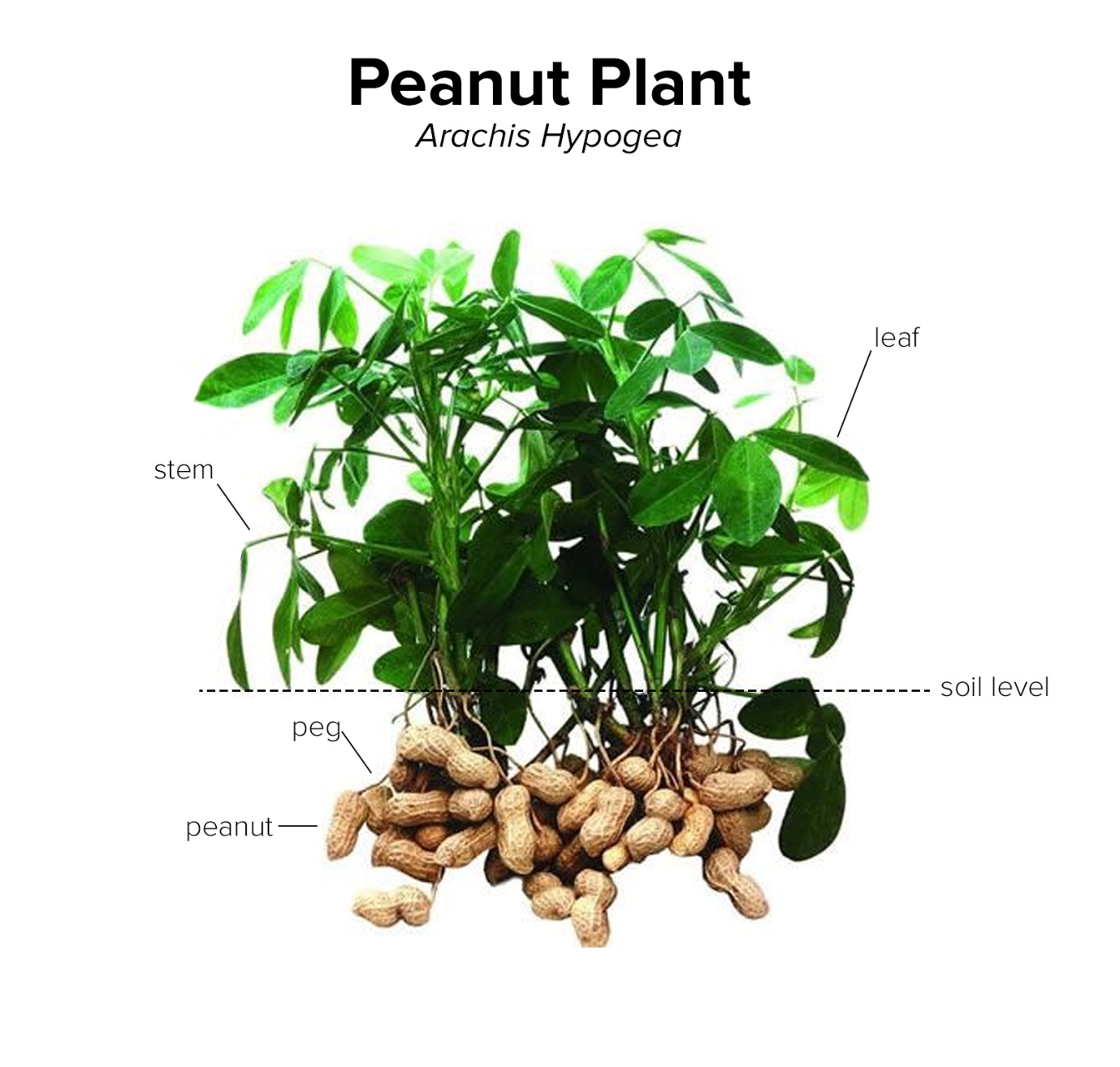 Groundnut plant or peanut plant is considered as 3rd major source of edible oil plant in the world after soyabean and cottonseed. According to the Food & Agricultural organization USA report & WTO report 2020, China is the leading producer of the groundnut (16.86 million tonnes) followed by India(6.8 million tones), Nigeria (03 million tones) & USA (2.5 Million tones) per annum. China contributes 37.8% production share followed by India 15.6%, Nigeria 6.9% and USA 5.9% in the total production share of peanut in the world.
Groundnut plant or peanut plant is considered as 3rd major source of edible oil plant in the world after soyabean and cottonseed. According to the Food & Agricultural organization USA report & WTO report 2020, China is the leading producer of the groundnut (16.86 million tonnes) followed by India(6.8 million tones), Nigeria (03 million tones) & USA (2.5 Million tones) per annum. China contributes 37.8% production share followed by India 15.6%, Nigeria 6.9% and USA 5.9% in the total production share of peanut in the world.
History of Peanut cultivation in India:-
The peanut plant was introduced in India during the first half 16th century by the Magellan expedition during 1519. The peanut plant was first cultivated together with the turmeric plant in mysore. By the year 1850, peanut was cultivation in more than 1000 hectare of land in madras presidency of India.

Pic source-world atlas
Sh. Govindaiyer, a local businessman in madras presidency played a significant role in promoting the cultivation of peanut in madras province by introducing double cropping and establishing oil extraction Unit. In Gujrat, it was Maharaja Bhagvat singhji who has taken the initiative for the cultivation of peanut in saurastra region. Between 1910 to 1945 the peanut crop expanded from madras to Gujrat and gradually to south west state of india.
Peanut cultivaiton in india is considered as one of the most important oilseed crop and majorly grown in state like Gujrat, Andhra pradesh, TamilNadu, Maharastra, Karanataka Rajasthan, Madhya pradesh & Uttar pradesh etc. In India, peanut is commonly known as groundnut, monkey nut or moongfali. Groundnut is the single largest source of edible oil in india and constitue roughly 50% of oilseed production in India.
Ground nut is cultivated in India throughout the year due to two-crop cyclie i.e one in March & other harvested in October. The popular variety of groundnut produced in India are Kadiri-2, Kadiri-3, BG-1 & 2, Chitra, Kaushal, PG-1, Chandra & Amber etc.
Peanut production in India is pretty extensive and 95% of it is sent away to be crushed into oil.

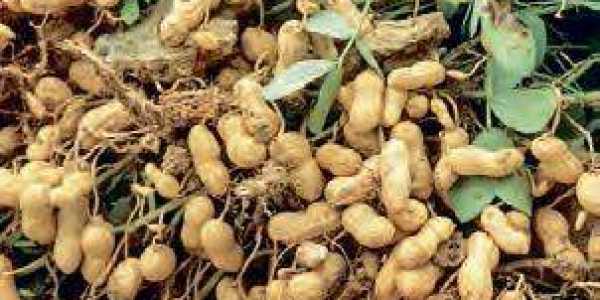
Pic source-marathibhumi english &New indian express
Characteristic of Peanut seed:-
Peanut seed is rich source of energy & protein and can contain 40-55% of oil by weight and approx 30% of protein. It is also rich in vitamin, minerals such as magnesium, phosphorus, potassium, zinc, calcium & sodium as well as bioactive compounds which have protective effects against cardiovascular diseases.
100 grams of peanuts can provide 550 calories and are an excellent source of vitamins-B, vitamin E, several dietary minerals like manganese, magnesium and phosphorus & dietary fiber.
Peanut kernel is very easy digestible and the oil cake obtained afterthe extraction of the oil from Peanut is a valuable organic manure and animal feed. It contains 6 % ‘N’, 1 %phosphorus and 1% potash.
Extraction process of Peanut oil :-
The manufactureing process of Peanut oil are generally done by two processing technique:- First one is by Mechnical pressing method which uses physically squeezing oil by either screw press oil mechine or hydrolic oil press machine to extract the oil from peanut and 2nd one is Solvent extraction method followed by chemical refining of oil.
Mechnical pressing technique of peanut oil
Step-1
After harvesting of the peanut or groundnuts, it is cleaned to remove the dust or dirts and then it is dehulled to remove the outer shell from the peanut as the out shell does not contains any oil. Also, removing of outshell of the peanut is very much necessary before cooking & pressing as it can absorb the oil if peanut is pressed or grinded along with outer shell.
Step-2
After removal of the outershell, the peanut kernel is heated before mechnical pressing. The peanut if heated below 60 ℃ then it is known as Cold press method. In this method, the oil extraction yield is very low but healthy as the red skin of the peanut doenot remove easily at temperature below 60 ℃ resulting, the peanut oil is nutritious as it contains protein.
To obtain the higher oil yield, peanut is usually heated or fried or roasted at 120 ℃ before pressing to extract the peanut oil. In this process, the yield can be upto 85% of oil and remaining oil (15%) can be obtain by adopting the technique of solvent extraction.
Step-3
After heating the peanut (either below 60℃ in case of cold press or more than 120 ℃ in case of hot press) it is put in the screw pressing machine or Hydrolic oil pressing machine to extract the oil. The crude peanut oil after first press or 2nd press is collected and the pressed peanut cake which can contains upto 15% oil in it can either be used as animal feed or oil can be extracted from it by solvent extraction method.
Picture of screw pressing oil machine & Hydrolic oil pressing machine

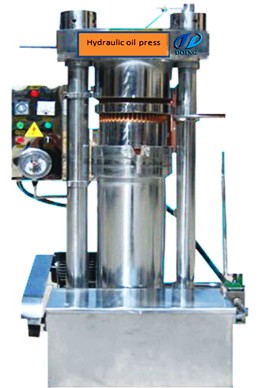
Pic source-bestoilmillplant.com & oilextractionmachine
Step-4
Filteration of crude peanut oil is very much neccessary to remove the impurities. The filteration system is able to remove any moisture content from oil and impurities or crushed particals. The peanut oil color can vary from yellow to greenish yellow in color.
Peanut oil obtain from traditional pressing method is considered as pure natural peanut oil which is rich in antioxident and vitamin-E.
What is Chemical solvent method ?
Chemical solvent extraction is a process which involve extracting oil from peanut seed by treating it with low boiler solvent using hexane or petroleum ether as a solvent. By this process, it recovers almost all the oil from peanut(upto 99%), it is then, peanut oil is refined with using chemical solvent (60-80°C) for 8 h.
The refining process of peanut oil includes various process such as –Degumming to remove hydralable phospholipids, neutralization or alkali refining to remove free fatty acid impurities, bleaching & de-coloring to reduce the level of pigments from the oil such as carotenoids & chlorophyll , De-odorization to remove the volatile compound such as aldehydes, ketones etc which are responsible for undesirable flavour & odor from the oil.
Crude peanut oil has a bland, slightly nutty like flavor which can be removed by chemical refining process to produce Refined peanut oil that is odorless & has higher smoke point and higher shelflife of oil.
What are the various types of Peanut oil?
There are several type of peanut oil are available in the market. From pure peanut oil to Refined to blend peanut oil. Each of these peanut oil has its own flavour characteristic as well as taste.
- Cold pressed peanut oil:- It is commonly known as Virgin Peanut oil or Kachi ghani peanut oil or filtered peanut oil becuase it is not chemically refined but only filtered. Virgin peanut oil is pure and natural peanut oil which contains natural color , aroma & flavor. it is low heat procesed oil below 60 degree C to retains its natural nutty flavour.
- Cold pressed peanut oil is filtered once or twice to remove any suspended particles. After filtereing the crude peanut oil it is then bottled and sold in market. The color of filtered or cold pressed peanut oil will be generally dark and cloudy in appearance and will have typical peanut taste & aroma.
- It is mainly used as a salad oil for salad dressing, marinations etc and also for low heat cooking such as sauteying. Kachi Ghani Groundnut oil is a rich source of minerals like magnesium, phosphorus, potassium, zinc, calcium, sodium, etc & also contains essential Vitamin like A,D,E & K and Rich in anti-oxidants and full of nutritions.
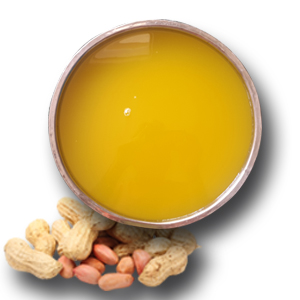
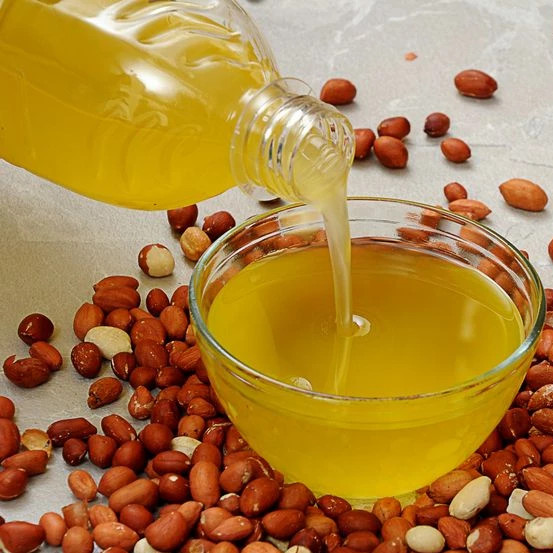
Pic source-Vigna exports & Green gateway
- Refined Peanut oil:-This is heat treated using chemical solvent extraction. This oil is obtain from the peanut oil cake which is the residue after 1st cold press or 2nd cold press oil cake as it contains approx 15% oil in it. After low boiler solvent using hexane or petroleum application to Oil cake to extract the remaining oil available in it. After extraction of oil, it is chemically refined by de-gumming, de-oxydizing, de-odorizing & de-coloring etc to obtain the refined peanut oil making it completely neutral cooking oil. The refined peanut oil does not contains any allergens making it safe for peanut allergens person.
- Benefit of refined oil is that it is having low free fatty acids, uniform color & consistency and neutral flavour. Refined peanut oil which is very common type of peanut oil used for deep fat frying or cooking due to higher smoke point ((232 °C).
- Peanut oil is slightly less refined as compare to other cooking oil becuase to retain some of the vital peanut protein for nutrients, taste & aroma. That is the reason refined peanut oil also have some typical peanut aroma.
- Refined peanut oil are commonly used in food industry, Bakery industry in making pastries, Shortening, cold sauce preparation, salad dressing and other food products. Peanut oil is considered as superior oils as compare to corn oil, soybean oil, cotton seed oil, olive oil, or safflower oil for making salad dressings to be stored below −12.2 °C.

Pic source-Alibaba.com
When peanut oil is refined, it is purified, bleached and deodorized which removes the allergenic proteins from the oil making it allergin free oil and doesnt poses any allergenic threat on consumption.
- Roasted peanut oil: -Roasted peanut oil is not a Refined peanut oil but obtain by hot press method after roasting of the peanut kernel to remove the thin red skin from the peanut and then put it in expeler to extract the oil resulting the extracted oil will have deep nutty flavour & dark golden brown in color.
- This type of oil is mainly used for flavouring food stuffs, In marinations, In salad dressing, in bread making, drizzle over food after cooking etc due to its nutty peanut flavour rather than cooking or frying purpose.
- This oil is also commonly known as groumet peanut oil. Premium quality of roasted peanut oil is 100% peanut highly aromatic peanut oil with strong roasted peanut nutty flavour & aroma. It is predominanetly mono-unsaturated fatty acid, making it hearth healty oil.
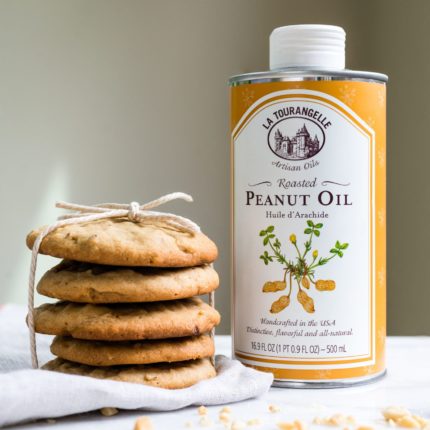
Pic source-La Tourangelle
- Blended peanut oil:- Peanut oil is often blended or mixed with similar testing vegetalbe oil which is cheaper than peanut oil such as soya bean oil. The blended peanut oil is very common and easily availbe in market due to comparatively cheaper price as compare to 100% pure peanut oil and used in frying and cooking.
Which peanut oil is a better choice- Filtered peanut oil or Refined peanut oil?
As we know that filtered peanut oil is not chemically processed and it is conisered as a 100%pure natural peanut oil as compare to the Refined peanut oil which is chemically process during refining.
Filtered peanut oil has higher value of Natural nutrients, anti-oxidants, Vitamins & Proteins as compare to refined peanut oil becuase during the chemical procesing of refining most of the natural nutrients are filtered, de-odorized, de-colorized etc making refined peanut oil is less nutty flavour and aroma.
As far as health is concerned, peanut oil is cholesterol free oil, high in Omega-3 fatty acid, good source of Oleic acid (Mono- unsaturated fat). Therefore, filtered cold pressed peanut oil is a better choice as compare to refined peanut oil.
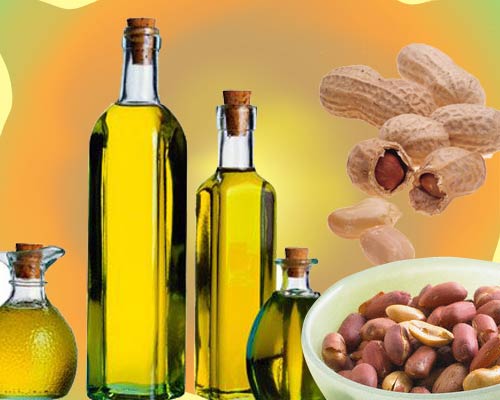
Pic source-Export india
Peanut oil brands comparative in India:-
As per the consumer voice report 2017, several peanut oil brand sample (Filtered peanut oil & Refined peanut oil) were conducted by consuer voice organization as per the standard of FSSAI and they have published the comparative report in their magzaine, as per the comparative test report 2017, they find that-
Filtered peanut oil Brand like- Dhara, Patanjali,Guiena, Gemini are found good brands and their oil quality are very good as per the FSSAI Standard.
Refined peanut oil brands like:- Kanodia, Dalda, Postman,Fortune,RRO Primo are found good brands offereing refined peanut oil in indian market.
Culinary use of peanut Oil:-
- Refined Peanut oil is one of the best choice for deep fat frying, sauteying, roasting food due to its high smoke point and high stablility. The smoking point of peanut oil is approx 450 degree F (232 degree C) it means that peanut oil is quite heat resistent , heat stability and doesnot burn easily. Whereas Filtered peanut oil has lower smoke point as compare to Refined peanut oil which is approx 350 degree F (175 degree C) and suitable for medium or low heat application such as salad dressing, making dips, sauteying etc.
- Roasted peanut oil is used to drizzle on finished food items and used as a finishing oil on cooked food.
- Peanut oil also have unique character because it does not absorb flavour and aroma from the food which has been fried in peanut oil resulting several different type of food can be fried in peanut oil in the same batch of oil without changing it. Due to this unique properties, peanut oil is used on large scale in food industry such as fast food industry, bakery industry etc.
- We are using Filtered peanut oil since generation in cooking whereas Refined peanut oil introduced in India in the year 1950. The first refined peanut oil brand in india was known as “Sipahi” but it gained its popularity under the brand name Postman.
- Peanut oil is extensively used in Indian & chineese cooking in making snacks,curries, sauce, canned food etc. Peanut oil is generally used in cooking to impart nutty flavor and taste in food. Peanut oil is used to make several Dips, cold sauces & peanut butters.
- Peanut oil is one of the best choice for frying french fries, tampura or other batter fried food to make it crispier. It is also very common for stir fries cooking.
Health benefit of peanut oil?
- Peanut oil is considered as a good & healthier cooking oil due to high content of Mono unsaturated fat which is believed to help in preventing heart disease and lower the cholesterol level & transfat. Peanut oil contains good cholesterol or HDL and lower the amout of bad cholesterol (LDL). It also protect the blockage of arteries and help in maitaining the cholesterol level in the human body.
- Peanut oil is naturally transfat free, cholesterol free. Highly refined peanut oil does not poses any peanut allergens.
- Peanut oil also contains more unsaturated fat as compare to saturated fat which helps in improving insulin level and help in regulating the blood sugar level. Peanut oil also contains vitamin E which helps to strengthen the hair repair & anti ageing properties
- Peanut oil is loaded with anti-inflammatory & anti oxidants properties which helps to prevent arthritis that occur due to inflammation of bones, & prevent various kind of cancer. Oil also helps to strengthning the joints
Nutritional value of peanut oil (per 100gms)
- Energy:-884 kcal
- Saturated fat:-17 gms
- Mono Unsaturated fat:-46 gms
- Poly unsaturated fat: 32gms
- Vitamin E:-15.7 Mili grams
- Zinc:- 0.01 mg
Global production of Peanut oil status
According to the world trade organization & USDA/United states agricultural department latest report China is the world leading peanut oil production (2928 Metric tons) followed by India (1106 metric tones) on 2nd position, Myanmar- 270 metric tones, Nigeria- 265 metric tones, USA-110 metric tones of peanut oil.(source-Induxmundi.com)
Allergy to peanut is a serious concern for the market as peanut allergy is a relatively high cause of food-related deaths. As per the National Institute of Allergy and Infectious Diseases, over 0.6% of the population in the U.S. is allergic to peanuts or peanut-derived products. The use of refined and processed peanut oil mitigates this risk to a certain extent.
Ref:-
- Agricultural & process food products export development authority, GOI
- Institute of Shortening and Edible Oils (ISEO), USA
- USDA, Agriculture Department, U.S.A
- Food allergy & research association
- Oil-international journal of chemical studies
- Chemijournal.com
- masterclass.com
- thepeanutinstitute.com
- shodhganga
